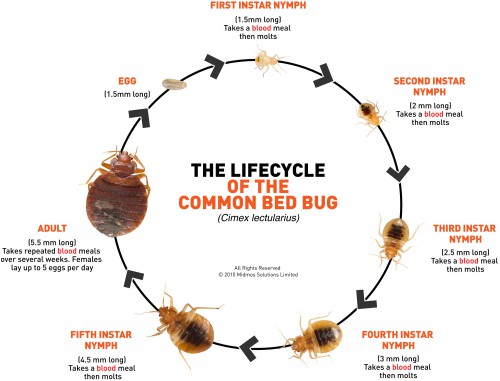What To Do If You Have Bed Bugs
Bed bug infestations are stressful. Waking up to find dozens of bites all over your body is no way to have to start your day, and it takes much more than your grocery store insecticide to get rid of these tiny pests. If you suspect bed bug activity in your home, you need to act quickly, carefully, and thoroughly.
How do I Know I Have Bed Bugs?
The first step to a bug-free home is to confirm that you do have bed bugs. In most cases, the first signs are the bites — itchy red welts, usually in a trail along your arms, underarms, or shoulders. While some people experience itching and burning after being bitten, others may feel nothing at all. While these marks are certainly alarming, you have to be sure that they really are bed bug bites; they may be a skin reaction of some sort, or bites from another critter, like a spider or mosquito.
To be absolutely sure that you’re dealing with a bed bug infestation, carefully inspect the seams of your mattress, the edges of your box spring and bed frame, and inside small nooks and crevices of your bedroom. If a credit card can fit in a slot, a bed bug can too. While the odds of seeing live bed bugs crawling around during the day are slim (as they are most active while you’re asleep), you may find traces of their activity:
- Feces are usually thin black spots or streaks, composed of digested blood that was excreted by the bedbugs as they returned to their hideout. To confirm that the mark is from a bed bug, try dabbing it with a wet paper towel; it should leave a red smudge.
- Blood stains are small red spots, often left in trails. They are usually from bed bugs spitting up some of the blood that they had been drinking, or from them being crushed by people rolling over in their sleep.
- You may also find molted skins. There are 5 stages of development during a bed bug’s maturity. During each stage, a bed bug will shed their skin to make room for a larger skin, like a snake. The skins will be transparent with a gold or amber tint. Since the skin is part of the bed bug’s exoskeleton, it will retain the shape and size of the bug, including its legs and joints.
The bed bugs themselves are reddish-brown and oval-shaped. They have six legs, small front wings, and no rear wings (bed bugs have lost their ability to fly through evolution, so their wings have no function anymore). They’re very small, usually only a few millimeters long, and are decorated with dark bands. If a bed bug has recently fed on its host, a deep red tint will show through its transparent skin.
Once you’ve confirmed that you do have bed bugs in your home, you’ll want to act quickly to kill the bugs and their eggs, and to prevent future infestations from occurring.
MM Novato is a blogger at www.bedbugsupply.com.




